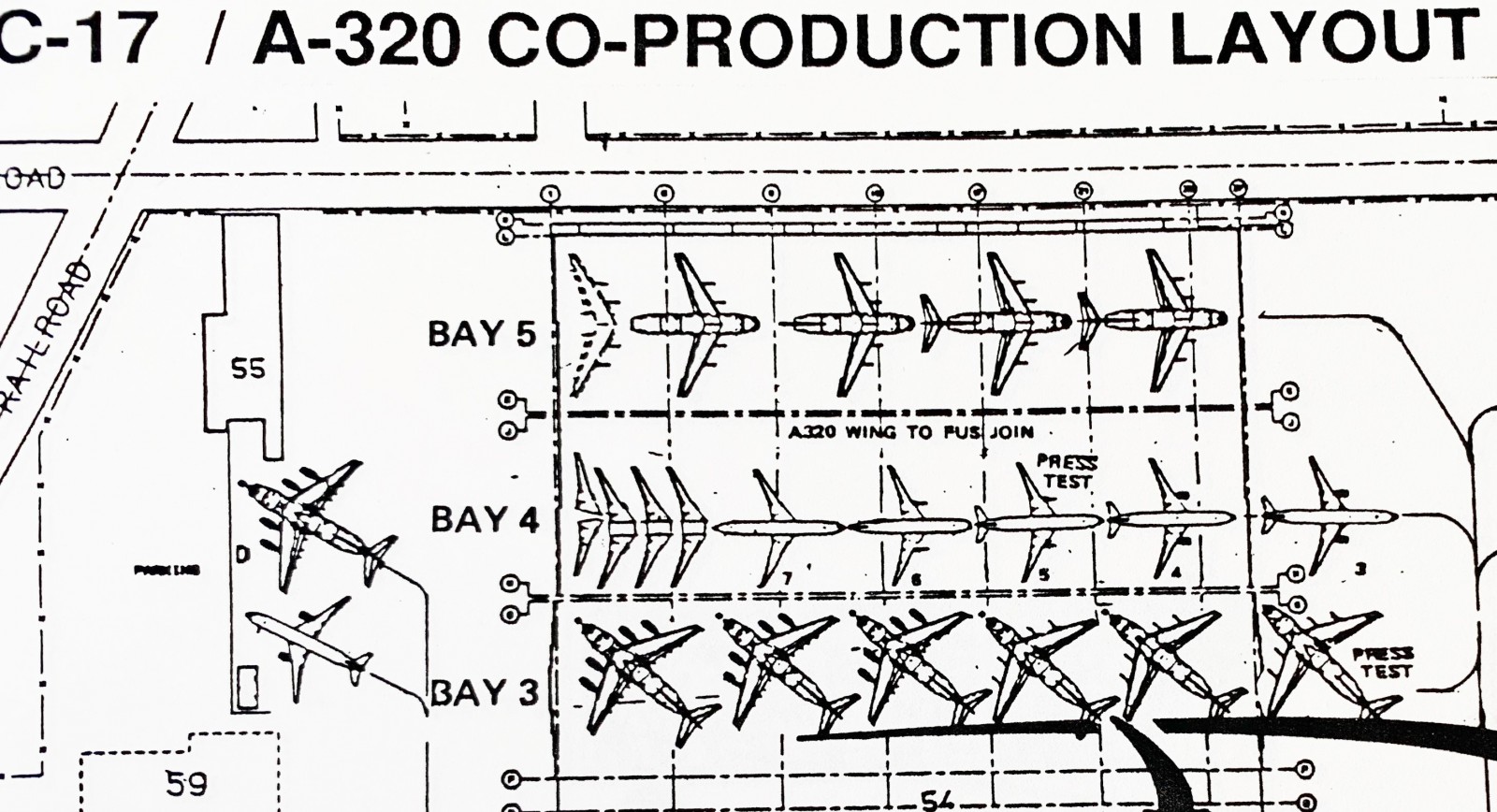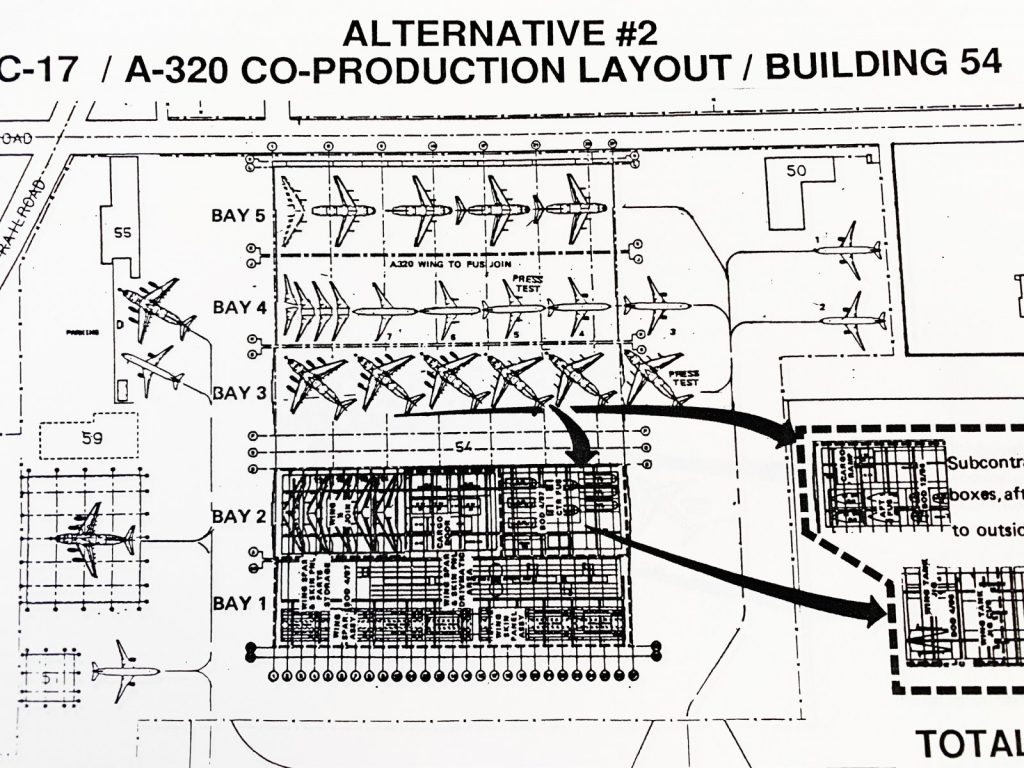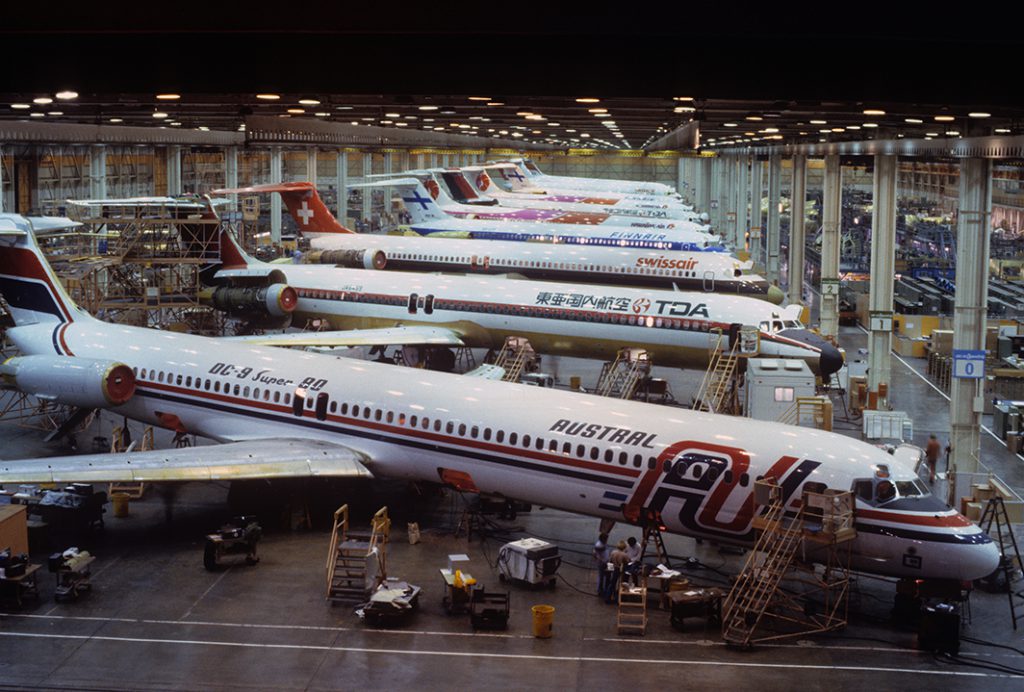Airbus / McDonnell Douglas Merger That Crashed
22 July, 2023
8 min read
By joining our newsletter, you agree to our Privacy Policy


It could have been the aviation merger of the century linking Airbus with McDonnell Douglas (MDC) but an incredibly short-sighted decision by then MDC Chairman John McDonnell killed the deal even thou press releases were agreed.
JOIN: AirlineRatings.com YouTube Channel
GET: Accurate MH370 Information From AirlineRatings.com Newsletter
SEE: GT’s Radar Slams Netflix MH370 Doco
In 1981, MDC lost its number two spot to Airbus, which logged 64 orders against only 29 DC-9s and eight DC-1Os, and Lockheed announced the closure of its TriStar production line. For Douglas, the prospects were gloomy with no DC-l0s to be delivered beyond 1982 and only 45 Super 80s on order.
MDC then turned to a 150-seater, called the New Commercial Aircraft. A memorandum of understanding was signed with Fokker in May 1981 to develop the MDF-100, a combination of NCA and F29 studies. This project was terminated in February 1982 because of the depressed state of the airline industry.
But the business was turning for Douglas, with success in several military contracts, including an order for 60 KC-10A Extender tankers derived from the DC-10-30CF that kept the tri-jet production line open. Despite this buoyancy, Douglas Aircraft chief, John Brizendine, tired of interference by the McDonnells- decided to retire. In March 1982, Sandy McDonnell, cousin of John McDonnell, appointed Jim Worsham, GE's VP of marketing development, as executive vice president at Douglas Aircraft.
Worsham arrived at the right time. Deregulation was rapidly changing market dynamics with point-to-point travel giving way to hub-and-spoke operations, which demanded 150-seat jets. Worsham responded with a once-only innovative rent-a-plane deal, secured orders from TWA and American for a total of 35 DC-9 Super 80s, and sold another 30 to Alitalia.
A beaming Worsham, (below left) who was appointed president of Douglas on November 15, 1982, told The Los Angeles Times that "reports of Douglas' death were exaggerated." The Super 80 orders triggered an avalanche of business, so the agenda of international collaboration fell off MDC's radar for a short time. The production rate on the DC-9 Super 8O-restyled MD-80 to deflect bad publicity associated with the DC-10 accidents soared to 10 a month in 1987. With commercial orders flowing, plus fat military contracts, Worsham was able to return Douglas to profitability.

At the end of 1986, MDC launched a modest improvement of the DC-10-dubbed the MD-11 with orders and options for 92 aircraft from 12 customers. The MD-11 was a compromised design because of the decision by the MDC board not to sanction funding for an all-new wing-a fact that would come back to haunt the company.
So, in 1987, the MD-11 was at the edge of its design guarantees and battling the new A340/A330 duo from Airbus. In October of that year, MDC even proposed a MD-11SS (Super Stretch) with the existing wing but with a range of only 5,000nm (9,250km)-considerably reduced from the 7,920nm (14,670km) of the standard offering.
Ironically, while bleating about Airbus receiving "subsidies" from European governments in its 1987 annual report, MDC was actively courting Airbus for a marriage of sorts to take advantage of the European consortium's affluence. "I had the idea of getting MDC and Airbus into some sort of marriage," Worsham recounted to the author in 2003. He raised the issue with Airbus executives in 1987.
The basis of discussions began with the MD-11 using the wing of the A330/A340. Talks focused on the Super Stretch with an A330 wing, called the AM-300, to challenge the Boeing 747. A new 100-seat aircraft or a joint endeavour with the A320 was also considered. In 1987, Airbus was yet to crack open the US market and its products made up less than 2 per cent (65 aircraft) of the US jet fleet, although another 177 were on order. Therefore, a tie-up with MDC was widely seen as the answer.

Enormous work went into the possible JV as these plans illustrate for joint production of the A320 and C-17 at Long Beach (above) and the AM300 (below) and stretched A320 at Salt Lake City.

According to Worsham and insiders at Airbus, an agreement was tantalizingly close and it was "looking win-win." In March 1988, European government ministers gave Airbus until July to finalize a deal with MDC. Despite talks with Lockheed over US production of the A320, McDonnell Douglas was seen as offering the best possibility for successful cooperation, and an agreement seemed imminent.
Adam Brown, Airbus vice president of customer affairs, was part of the evaluation process told the author in 2003: "Worsham believed that Airbus and MDC could collaborate on a single program (the AM-300) while continuing to compete with the MD-11 versus the A330/A340 and MD-90 versus the A320. Jean Pierson [head of Airbus] was convinced this wouldn't work. If we were to get together it would have to be a complete 'marriage' across the whole product line."
Brown says Airbus developed a total plan for one product line. The AM-300 was at the top of the range and, to maximize its appeal to both Airbus and MDC customers, it would be offered with the option of either an A330/A340 or MD-11 cockpit & flight system. There would be work-sharing on the A330/A340, calculated equally to give each partner the same ratio between investment and sales revenue, and MDC agreed to halt the MD-11 once the joint program was in place. An assembly line for A321s would be created at Long Beach for aircraft ordered by US customers, and Airbus and MDC would collaborate on a new single-aisle design.
According to Brown, John McDonnell, the new chairman of MDC, and Worsham accepted that this was the only realistic way forward, and met with Airbus management to finalize details. At this point a "press release was drafted," but it fell apart over the definition of the joint single-aisle 100-seat aircraft that was to be developed.

(L:R) John McDonnell and then Douglas President Bob Hood at the rollout of the MD-90 in 1992.
"John McDonnell insisted that to create an external impression of overall balance it would have to be an identifiably MDC product, derived from the MD-90, while Airbus was equally firm that any new aircraft would have to use Airbus fly-by-wire technology."

Above: MD80s on the production line at Long Beach.
At the time Airbus had sold several hundred A320s and momentum was building. Thirty-five years later Airbus has sold almost 18,000 of the A320 family.
Worsham recalls that a lunch in Germany to resolve this last issue between Franz-Josef Strauss, chairman of the Airbus Supervisory Board, and John McDonnell was a menu for disaster. The two men simply did not agree, leaving the deal all but dead. Strauss, who collapsed and died whilst hunting a few months after the meeting, was described by an Airbus official "as a strong-willed, sometimes controversial German politician, who had made aviation his speciality. He had been extremely active in the re-establishment of the German aerospace industry post-war."
At the lunch, John McDonnell was upbeat that MDC had sold more than 100 MD-80s in each of the previous four years and the MD-11 was starting to win more sales battles, not least, a lucrative contract from Delta. What he did not know was that· his strategy of not committing to a new wing for the MD-11 to save money had sown the seeds for MDC's collapse.
A spokesman for John McDonnell suggests that "the reasons the initiative never went forward were related more to not being able to determine how to do joint-marketing of aircraft the companies would do together, while still offering separate products that would offer the airlines similar capability."
Jim Worsham reflects that the encounter of personalities left him in absolute shock. Months of negotiations were in tatters after only 45 minutes. "Strauss suggested that Douglas didn't have a hell of a lot to offer with old technology and obsolete stuff, and that really rubbed John the wrong way."
In 1990, with its French trousseau in tatters, McDonnell Douglas turned to Asia with its promise of cheap but high-quality labour and buoyant airlines to save its ailing commercial aviation division. The move turned out to be the final and spectacular-and ultimately unsuccessful-bid to revive the glory days of the Douglas Aircraft Company (DAC).
The lack of investment in MDC would finally result in the merger with Boeing in 1997.
Get the latest news and updates straight to your inbox
No spam, no hassle, no fuss, just airline news direct to you.
By joining our newsletter, you agree to our Privacy Policy
Find us on social media
Comments
No comments yet, be the first to write one.


